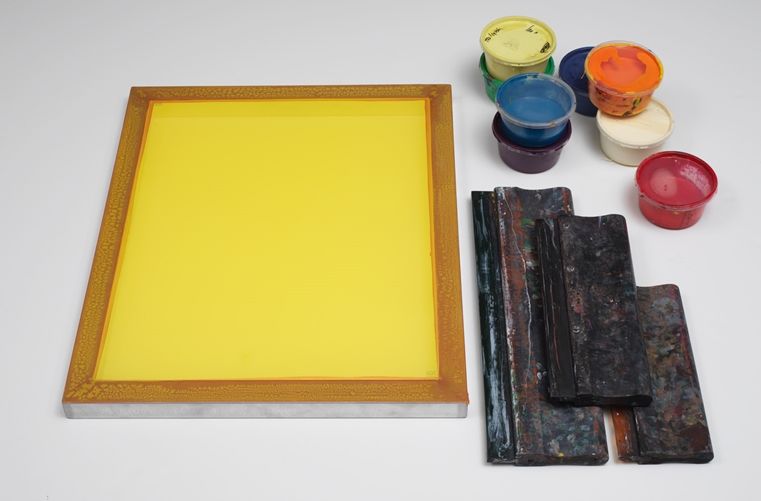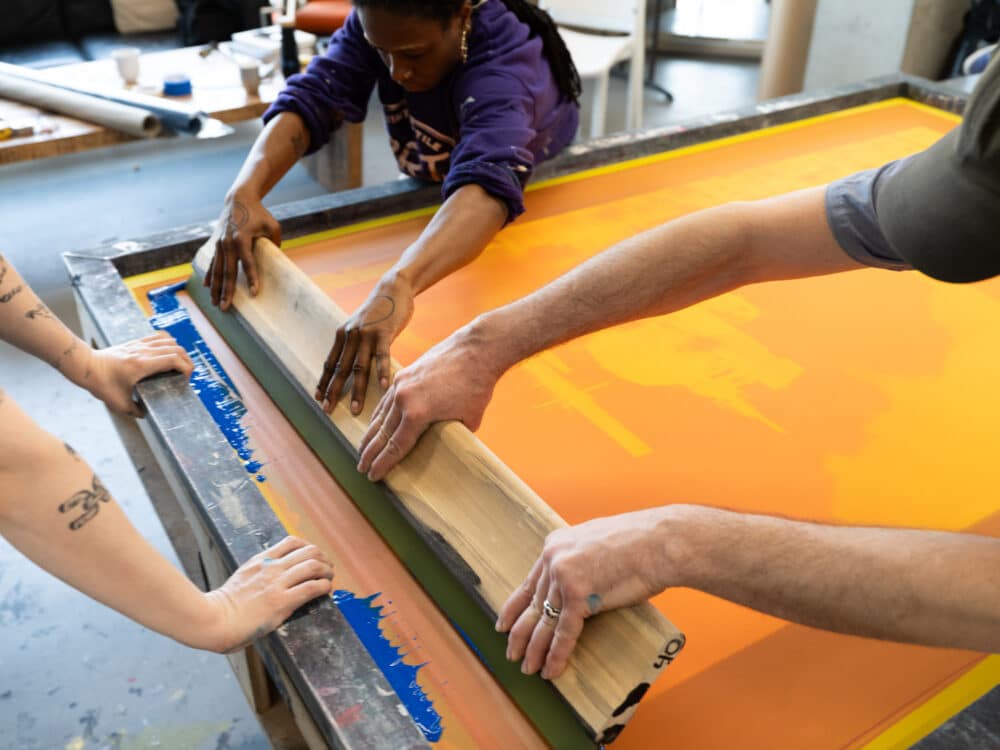ChatGPT said: Deep dive at 10:9 Design LLC Company screen printing process
The Important Guide to Understanding Screen Printing and Its Versatile Makes use of
Screen printing has a rich background that goes back to old times, developing right into an advanced technique made use of throughout numerous sectors today. This guide checks out the ins and outs of the screen printing procedure, describing its applications in advertising and marketing, fashion, and home decoration - 10:9 Design Texas. Recognizing these basics can open imaginative potential for both industrial and artistic tasks. The following sections will disclose vital tips and techniques to enhance one's screen printing ventures
The Background of Screen Printing
Although screen printing has origins that trace back centuries, its advancement mirrors the artistic and technical advancements of numerous societies. Coming from old China, the method was at first made use of for decorating textiles and later infect Japan, where it came to be important to Ukiyo-e woodblock printing. The technique shifted to Europe in the 18th century, where it got popularity among craftsmens and industrial printers. The creation of image emulsion in the 20th century transformed screen printing, permitting more complex styles and greater efficiency. Artists like Andy Warhol even more propelled its appeal, making use of the tool to develop renowned works that mixed commercialism and art. By the late 20th century, screen printing had actually established itself as a versatile technique, used in style, advertising, and art. Today, it remains to progress, integrating electronic technology and increasing its applications throughout different sectors.
The Screen Printing Process Explained
Screen printing transforms creative visions into substantial layouts through a collection of accurate actions. At first, an image is developed and afterwards transferred onto a screen, generally constructed from great mesh fabric stretched over a framework. A light-sensitive solution is related to the screen, which is subjected to light, hardening in locations not covered by the picture. After rinsing the unhardened solution, a stencil is created.
Next, the screen is placed over the substratum, whether it be fabric, paper, or one more product. Ink is after that pressed through the open areas of the stencil utilizing a squeegee, transferring the design onto the substratum below. This procedure can be repeated for multiple shades, calling for separate displays for each and every hue. Lastly, the printed thing is healed making use of heat to assure the ink adheres appropriately, resulting in a sturdy, vivid design prepared for usage.
Kinds Of Screen Printing Techniques

Additionally, specialized methods, such as discharge screen printing, remove color from the fabric to create softer prints, while foil screen printing uses metal aluminum foil to achieve a glossy coating (10:9 Design LLC Company). Each strategy provides distinct characteristics, accommodating various imaginative requirements and manufacturing ranges, ultimately broadening the opportunities within the screen printing domain name
Applications of Screen Printing in Numerous Industries

Furthermore, the signage and marketing markets utilize screen printing for developing distinctive displays and banners. This method permits for bold shades and intricate layouts that catch attention. In electronic devices, screen printing is used for applying conductive inks to circuit card, essential for component connections. The home design market accepts screen printing to produce distinct styles on textiles and wall surface art. In general, screen printing functions as a critical device across varied fields, boosting products with individualized and aesthetically enticing graphics.
Tips for Effective Screen Printing Projects
While embarking on a screen printing project, careful interest to detail can significantly boost the final result. First, selecting high-grade materials is vital; this includes the screen, inks, and substratums. Utilizing proper mesh matters can influence ink deposition and detail resolution. Prep work is similarly vital; complete cleansing of screens and proper exposure times assure crisp prints.
Next off, precise registration is important for multi-color prints. Making use of placement devices can assist achieve accurate layering. Additionally, testing prints on scrap materials before manufacturing helps determine possible problems without wasting sources.

Frequently Asked Concerns
What Materials Are Ideal for Screen Printing on Textile?
Cotton and polyester blends are suitable for screen printing on material as a result of their longevity and ink absorption. Furthermore, specialty textiles like silk or canvas can create special textures and finishes, boosting the general layout quality.
Exactly how Do I Tidy and Maintain Screen Printing Equipment?
To clean and keep screen printing devices, one should frequently clean displays with appropriate solvents, inspect squeegees for wear, oil relocating components, and shop all products in a dry, dust-free atmosphere to lengthen their lifespan.
What Are the Ecological Influences of Screen Printing?
Screen printing can have considerable environmental impacts, consisting of chemical waste from solvents and inks, water use during cleaning procedures, and energy intake. Green products and lasting methods are crucial for lessening these negative effects.
Can Screen Printing Be Done at Home Efficiently?
Screen printing can be successfully done at home with the right materials and strategies. Enthusiasts can develop top quality prints, though success depends on their skill level, equipment, and understanding of the process entailed.
What Are the Costs Associated With Starting a Screen Printing Business?

Beginning a screen printing company entails prices for tools, materials, and work area. First expenses typically vary from a couple of hundred to numerous thousand dollars, relying on the range, high quality of equipment, and desired production capacity.
Screen printing has a rich background that dates back to ancient times, progressing right into an innovative strategy used across various sectors today. One more method, rotary screen printing, uses cylindrical displays, helping with continuous printing on material rolls, consequently enhancing efficiency for large-scale productions. Additionally, specialty techniques, such as discharge screen printing, remove color from the material to produce softer prints, while foil screen printing uses metallic foil to accomplish a glossy coating. In the style sector, screen printing is extensively made use of to develop lively layouts on apparel, allowing brand names to display their unique styles. Cotton and polyester blends are excellent for screen printing on textile due to their sturdiness and ink absorption.